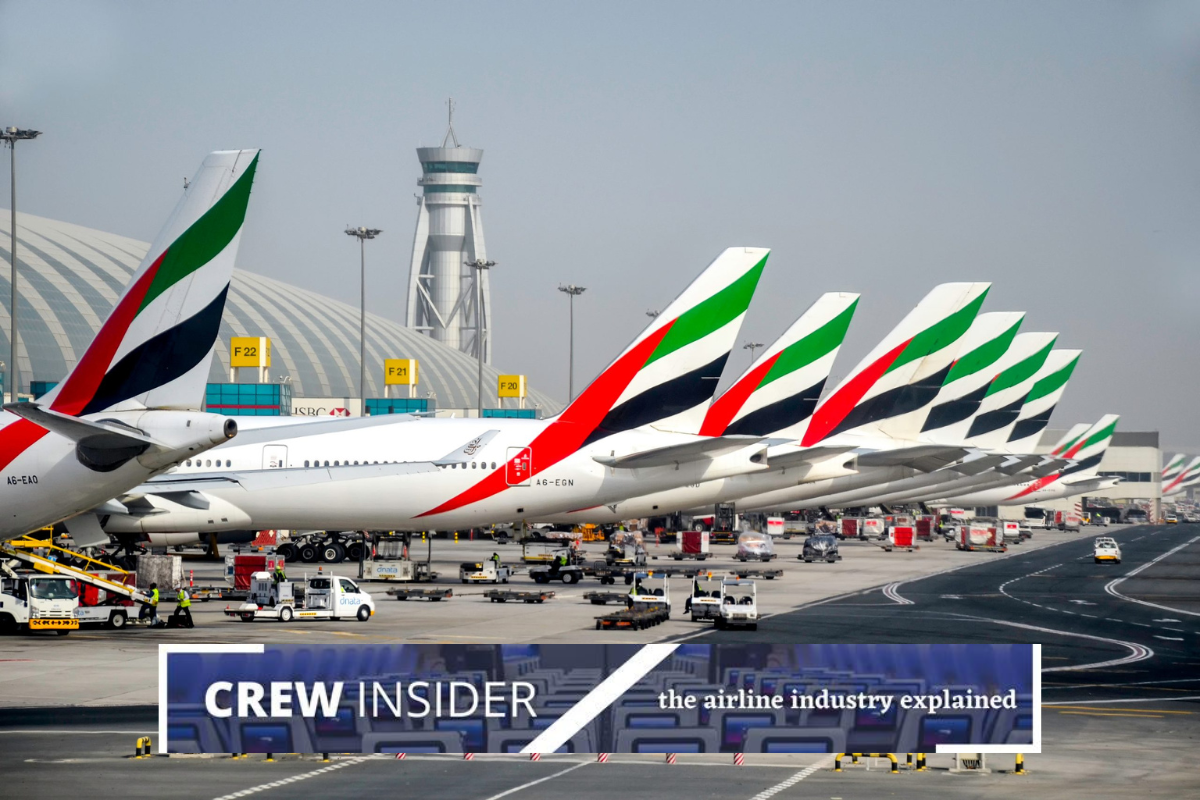
Crew Insider is our series of informative articles that answer some of the most common and less common questions about the aviation industry from the point of view of an industry insider. Our question answerer-in-chief is Mateusz Maszczynski, who has worked in the airline industry for nearly two decades and has honed his expertise in the field through this blog since 2015.
If you’ve ever searched for a long-haul flight (which in 2024, I’m pretty sure you have), then you’ll be accustomed to seeing that buying a flight with a short layover in a third city can work out a lot cheaper than buying a non-stop flight.
This can seem counterintuitive, given that surely the costs for the airline are going to be higher. You’re going to be taking up a seat on two planes rather than one, there’s the extra cost of handling your luggage, and then there’s the extra food and drink you might consume on two or even three flights.
There are, however, some very good reasons why it’s very often cheaper to direct with a stopover rather than going non-stop, although not every reason applies to every flight.
Let’s go over some of the most common reasons why flying with a short layover can save you some cash.
People are willing to pay extra to get somewhere quickly and with less hassle
We’ve all heard the phrase ‘time is money’ and airlines know that passengers are willing to spend money to get somewhere as quickly as possible with minimal fuss. If there’s a non-stop flight to your intended destination, it makes sense that airlines will adjust fares accordingly, adding a premium to get you there hours faster than if you had to change planes in a third city.
It’s not that flying with a stopover has been priced deliberately cheaper but, airlines know that passengers are willing to pay more for the non-stop routing. This even applies even when an airlines might offer a less luxurious product compared to their competitor which can only get you to your final destination with a layover.
Airlines know that a lot of passengers are willing to pay extra to get to their destination as fast as possible. If course, if you have time to spare, then looking for flights with a layover can save you a lost of hard earned cash.
Some airlines have based their business models on competing for connecting passengers
Prime examples of these kinds of airlines are the Persian Gulf carriers based in Abu Dhabi, Dubai, and Doha who connect East and West with short connections in their respective home hubs.
If it wasn’t for these kinds of airlines, passengers would be restricted to flying non-stop flights with a very limited number of airlines. And that results in passengers being forced to pay very high fares.
So-called super-connectors like Emirates and Qatar Airways have been able to dramatically reduce airfares on ultra-long-haul flights by offering connections through their hubs because each plane will be carrying passengers who are traveling to multiple different destinations.
Although it’s not so much the case for Dubai anymore, other Gulf airlines would struggle to sustain flights just with point-to-point traffic to their home hubs, so they need to price their fares competitively to attract connecting passengers.
Connecting can reduce certain taxes and fees
There are many countries that added taxes and surcharges to airfares but these fees will often vary depending on whether you are on a short or long-haul flight.
For example, the United Kingdom added a pretty hefty tax on passengers departing the country on a long-haul flight, but the tax is much smaller for passengers on short-haul flights.
In comparison, Sweden is set to axe its tax on airline tickets next year, which could make it cheaper to connect onto long-haul flights from the Scandinavian country.
It can, therefore, help to fly on a short-haul flight out of the country and connect onto a long-haul flight from a third country where these taxes aren’t so high.
Of course, it’s not always clear how these taxes might impact the cost of your flight when you’re just doing a general flight price comparison search but this could one of many varying reasons why adding a stopover can help you save some cash.
So, in summary, adding a stopover to your flight can help you save money for three main reasons: 1. People are willing to spend more to fly non-stop and arrive at their destination faster; 2. Certain airlines have built their business models on competing for connecting passengers with attractive fares; 3. You could save on government-imposed taxes by adding a connecting flight.
Mateusz Maszczynski honed his skills as an international flight attendant at the most prominent airline in the Middle East and has been flying ever since... most recently for a well known European airline. Matt is passionate about the aviation industry and has become an expert in passenger experience and human-centric stories. Always keeping an ear close to the ground, Matt's industry insights, analysis and news coverage is frequently relied upon by some of the biggest names in journalism.








The real reason is that airlines are selling you a seat from A to B. It’s the law of supply and demand. There are only a certain amount of flights to get from A to B nonstop. On the other hand, there are many ways to get from A to B with a connection across several airlines.